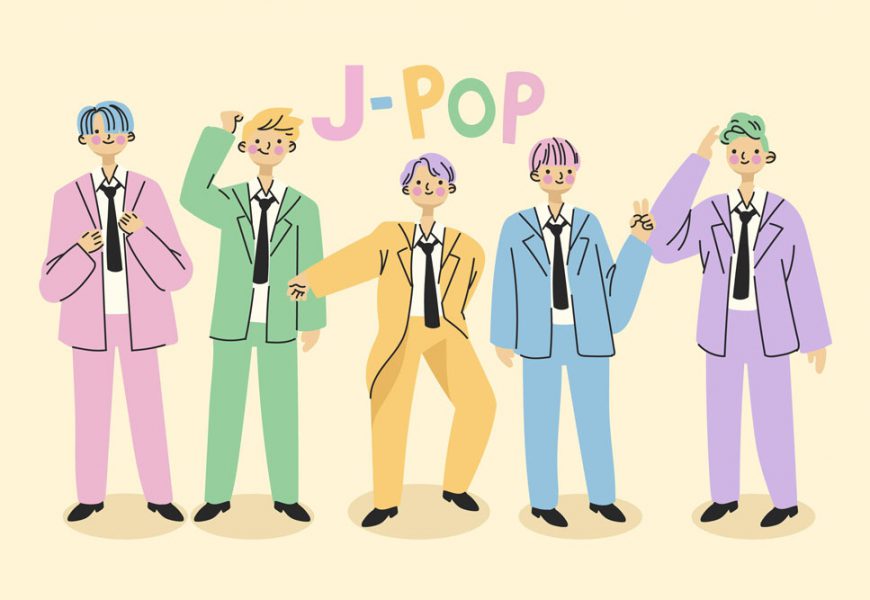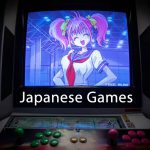Jpop has given rise to many popular names such as Kyary Pamyu Pamyu, Baby Metal, and AKB48, which also earned a recognized place in international pop music. It was invented sometime back in the late 1980s as a fashionable sub-genre by an FM radio station. It expanded its category by the 1990s and covered multiple genres for younger people living in Japan. Nonetheless, because of the economic loss, the growth of digital technology faced serious issues during the 2000s. In this article, we will talk about JPop music and its origin.
- What Is JPop?
- The Initial Days: Jazz & Ryuukouka (1920s-50s)
- Origins Of Japanese Pop Culture: Kayoukyoku (1960s)
- Voice Development Of New Music And City Pop (1970s - ‘80s)
- Rise Of Female: The Golden Era In Japanese Music Culture (1980s)
- Development Of JPop: Hip-Hop And R&B Music (the Mid 2000s)
- Rise of Folk, Seiyuu, And Shibuya In The Late 2000s
- Top Characteristics Of JPop Groups
What Is JPop?
J-pop, also known as Japanese pop music, is popular in both Japan and outside the country. It originated in the 1960s and gained popularity in the 1990s. There are different types of music genres such as folk, jazz, pop-rock, idol pop, and vocal ballads. It is highly radio-friendly and can be accessed from anywhere in the world. J-pop is highly different from the Western and other forms of Asian pop sound. Let’s learn about the history of Japanese pop music in depth.
The Initial Days: Jazz & Ryuukouka (1920s-50s)
Modern Japanese pop music existed for a long period from 1912 to 1926 when Western music instruments such as harmonica and strings were popular for musical performances. Throughout this period, people could see an increase in Western Jazz and Blues in Japan. It was the time when music composers started experimenting with Western jazz elements. Although, such songs were written in the pentatonic scale, the Japanese way of singing.
Origins Of Japanese Pop Culture: Kayoukyoku (1960s)
Kayoukyoku is considered the true origin from where Japanese pop culture has taken birth. It is also known as lyrical singing music, which refers to the mixture of Japanese compositions with western music elements. Throughout the 60’s, Kayoukyoku controlled the traditional version of enka with the singers, accepting the introduction of rock and roll music in the world. However, one of the things that became popular during this period was translating western songs into the Japanese language and covering them. Hence, Japanese singers and composers started creating their original lyrics and converting them into music as time moved ahead.
Voice Development Of New Music And City Pop (1970s – ‘80s)
Folk music attained massive popularity during the 60’s period, in which most of the songs were related to universal messages or Western hits. In the early years of the 70’s, the trend took a step towards creating personalized folk music, and it was when an influential singer-songwriter was born.
Yosui Inoue is one of the preeminent singer-songwriters, who created an unmatched record with the brand new album Kouri no Sekai. It was a complete hit and stayed at the top of the Oricon charts for consecutive 35 weeks. It was when women started to recognize music bands such as Yumi Matsutoya and Miyuki Nakajima. This era of Japanese pop culture was known as the “New Music” era.
However, rock music was a little kept behind, but it took the help of electric synthesizers to be truly recognized. The bands like Southern All Stars and Yellow Magic Orchestra premiered in the late 70s. Both the bands took Japanese music to newer heights and are known as the J-pop pioneers.
Yellow Magic Orchestra brought the “City Pop” concept to grow as a popular trend during the early 80s. It highly focused on the urban and big-city living themes with jazz fusion and electronic elements at its back. Bands like Southern All Stars started hitting rock and roll in the Japanese language that flourished during the 80s. Famous bands like TM Network, Alfee, Boowry, and the Checkers were all-male bands that broke the record and took Japanese music culture to a newer level.
Besides that, rock music took an exciting turn in the late 80s. During this period, “Visual kei” arrived, an infamous rock music band. It focuses on the looks and theatrics of its band members as much as its sound and voice, including big hair, female clothing, and makeup. Till today, it is one of the most famous Japanese rock bands.
Rise Of Female: The Golden Era In Japanese Music Culture (1980s)
Japan saw immense popularity in the 70s when women started indulging in Japanese music. There was a shift in kayoukyoku, where Yamaguchi became one of the most famous artists, who used special pronunciation in her songs. Yamaguchi and her other female contemporaries, such as Candies and Junko, were famous for their great image and beautiful voice, singing with occasional sexual undertones. Their popularity led to branding by popular record companies for female solo and group acts to take the concept of “girl next door.” By the 1980s, the era of the “idol” female singer presented a clean image.
The Golden Era officially marked the end of the kayoukyoku era, with several others kayoukyoku lyricists and composers transforming to producing female idols before retiring from the music. There have been several rises in J pop artists, and one of them is Seiko Matsuda. She broke the record and became a single streak on the Oricon charts. Many other female artists such as Akina Nakamori became recognized, but her sudden suicide attempt led to a high decrease in her popularity.
Development Of JPop: Hip-Hop And R&B Music (the Mid 2000s)
Artists like Zeebra and DOUBLE have improved the music of Japan by performing flavored Japanese hip-hop items since the 90s. In the 21st century, they became the approved sub-genre of J-pop artists. The initial music playing in Utada created a big part in popularizing R&B in Japan. Duo Chemistry was highly popularized in 2001 with the release of their album, The Way We are, which sold an estimation of a million copies. It was the same time EXILE made its debut in the industry and sold millions of copies of their albums and singles.
Rise of Folk, Seiyuu, And Shibuya In The Late 2000s
Male duos like Kobukuro and Yuzu became very popular during the 2000s. All Singles Best, the first album, was the first-ever multi-million seller by a male actor in the new millennium. Like that, Kobukuro became the number 1 album streak in 2008. On the other hand, Nakata Yasutaka, a member of the electronic duo capsule, made her return. Originally, the duo started as traditional J-pop before transforming into shibuya-kei before achieving popularity in electronica. Besides that, he also produced the female idol group and became popular for remixing songs. Another popular trend in the late 90s was the popularity of seiyuu and anime voice actors. The top Ultimate Diamond by Nana Mizuki topped the charts and became an established composer.
Top Characteristics Of JPop Groups
Multiple characteristics define the sound and appearance of J-pop artists, which are as follow:
- Sound: With the expanding size of the Japanese music market, there is a requirement for J pop artists to accept Western music styles. J-pop features chord changes, tones, notes, and vocal delivery closer to traditional Japanese music than American rock and pop music. The melodies are simple in Japanese music, and the pitch gets higher.
- Marketing: The top J pop groups usually record a series of singles instead of assembling an album. Later on, a single track is chosen to lead the album. It is generally featured on a gathering album, often with an alternate “album mix’ to earn sales for both singles and recorded ones.
- Visuals: The appearance of the Japanese singers is one of the key factors of their music. Female artists are seen as dressed in fantasy clothing in a cute or childlike manner to gather the interests of the youth. The male artists need to add colors to their dress, making it look more like hip-pop as per the youth styles.
Top 4 Popular JPop Artists In Japanese Music Culture
Numerous Japanese artists are coming from Japan, in which the top four are as follow:
- Official Hige Dandism: It is one of the biggest Japanese pop bands. They released a single in 2019 “Pretender”, and it attained 300 million streams on Apple Music. In the same year, Traveler was at the top of Japanese music charts.
- AKB48: It is currently one of the top-selling girl groups. It is named after the district in Tokyo called Akihabara, which is almost a music industry. The group has more than 100 members in several teams and bands, which have been presented in various anime, TV shows, video games, and manga.
- Arashi: This is one of the best-selling boy bands across Asia, which was established in 1999. The band has achieved numerous chart successes till its destruction in 2020. One of their best compilations is with Taylor Swift and K-pop juggernaut in sales.
- Kyary Pamyu Pamyu: Kyary Pamyu Pamyu is a former blogger and fashion model. She does not have a lively fashion sense and childlike presence but is also one of the rare J-pop artists with western fans from American record labels.
Wishing To Learn More?
The history of Japanese music culture is a continuous and dynamic topic with multiple aspects. There are numerous topics to cover, including traditional and western counterparts. You can read multiple Japanese books and articles to learn more about its pop music origins; all you need is the right resource!




